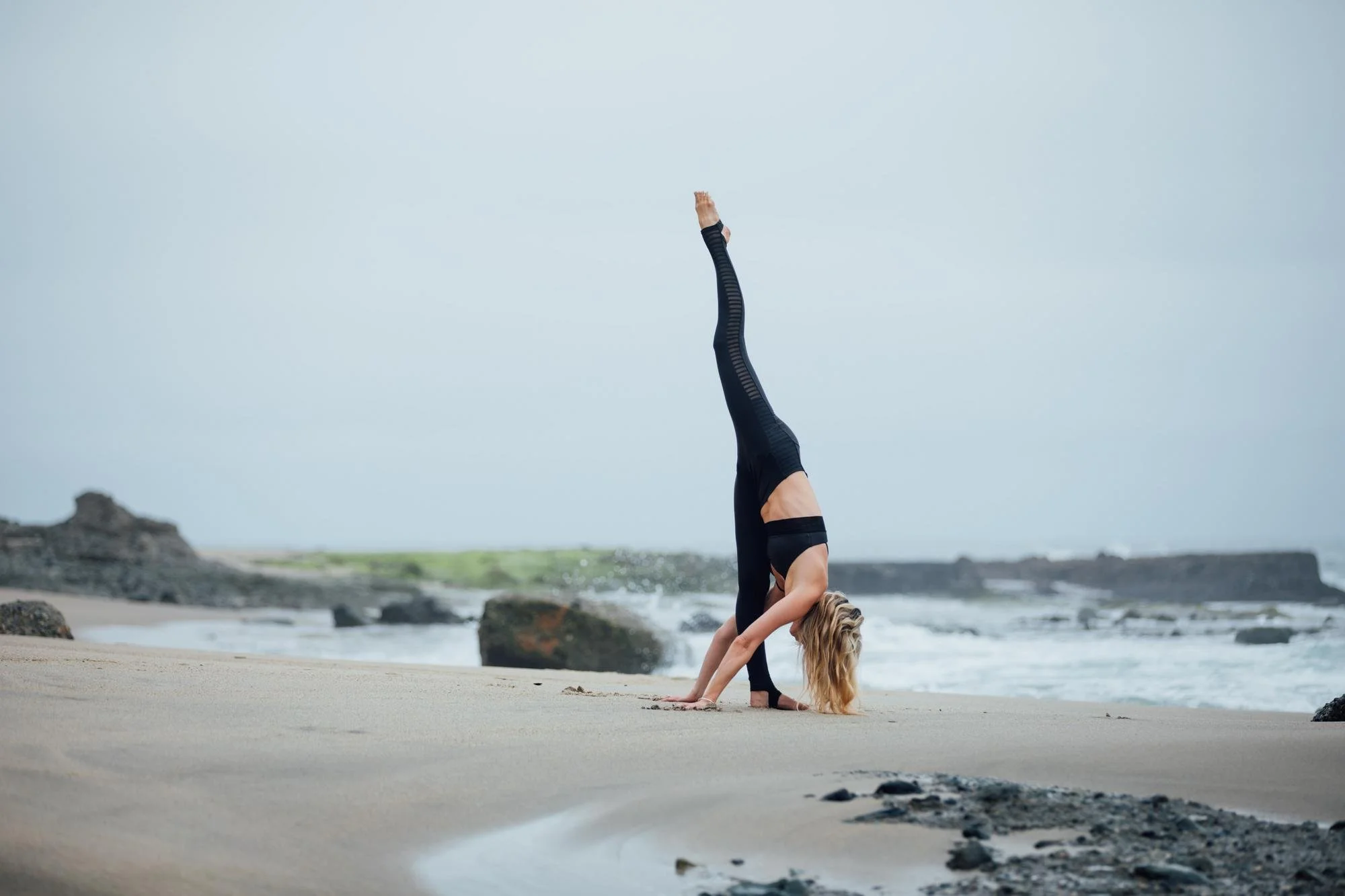Pose Breakdown: Standing Splits
Reach for the sky (with your foot) in Standing Splits Pose, or Urdhva Prasarita Eka Padasana. Also called One-Legged Forward Fold or Standing Monkey Pose, this asana has a little bit of everything: It’s a single-leg balance. It’s an inversion. It’s a hip opener. It stretches your entire lower body. This test of strength and flexibility looks pretty cool, too.
While the legs and hips are getting the same basic stretch as they would in Front Splits, full splits are not a prerequisite! Since there’s little chance of slipping and going too far too early, there’s a lot of room to gradually work your way up within the pose itself. They’re similar shapes, but different challenges — and if your Standing Splits look more like an L than an I at the beginning, that’s fine. Either way, make sure to give your hips a lot of love while warming up.
Benefits of Standing Splits Pose
Strengthens knees, ankles, and groin muscles
Stretches back, hamstrings, and calves
Improves balance
Strengthens your immune system
Improves circulation and digestion
Relieves stress
Contraindications
Ask your doctor before doing this pose if you have any issues with your hips, knees, ankles, and feet. Avoid this pose if you have any issues that keep you from doing inversions, including very high blood pressure.
Warm-Up Poses for Standing Splits Pose
Seated Forward Fold
Wide Legged Forward Fold
Half Pigeon Pose
Runner’s Lunge
Half Split
Scorpion Dog
Warrior III
One-Legged Tadasana
How to Do STANDING SPLITS Pose
1.
Begin in a Forward Fold position with your feet hip-distance apart.
2.
Come onto your fingertips for a flat back and lift one leg back behind you while pointing your toes.
3.
Brace yourself with your fingertips as you grab your standing leg ankle and pull the crown of your head down toward the ground.
4.
Pull your forehead in toward your shin and lift your lifted leg up as high as you can.
5.
Draw the outer hip of the standing leg in toward the midline and squeeze your inner thighs together.
6.
For a bit more extension, bend your lifted leg, pull your forehead in more, reach your lifted knee up high, and then straighten your lifted leg again.
Follow-Up Poses for Standing Splits
Standing Forward Fold
Wild Thing
Prone Tree Pose
Happy Baby
Urdhva Prasarita Eka Padasana Meaning
The Sanskrit name for Standing Splits uses a lot of basic anatomical and directional building blocks: “Urdhva” means “raised” or “elevated,” “prasarita” means “stretched out” or “extended,” “eka” means “one,” “pada” means “foot” or “leg.” Put that all together with “asana,” or “posture,” and you get something like Elevated Extended One-Leg Pose.
You see a lot of these terms in Sanskrit names for poses: “Urdhva” puts the “up” in Upward Facing Dog, or Urdhva Mukha Svanasana. “Prasarita” indicates the extended stance of “pada,” the feet, in Wide-Legged Forward Fold, or Prasarita Padottanasana. Half King Pigeon, which you may have practiced as just Pigeon, is Eka Pada Rajakapotasana — literally, “One Legged King Pigeon.”
While there’s not a thrilling myth attached to Standing Splits pose, it’s a great opportunity to learn a little Sanskrit.
Put your Standing Splits into practice with yoga classes on Alo Moves, available for free with a 14-day trial.








